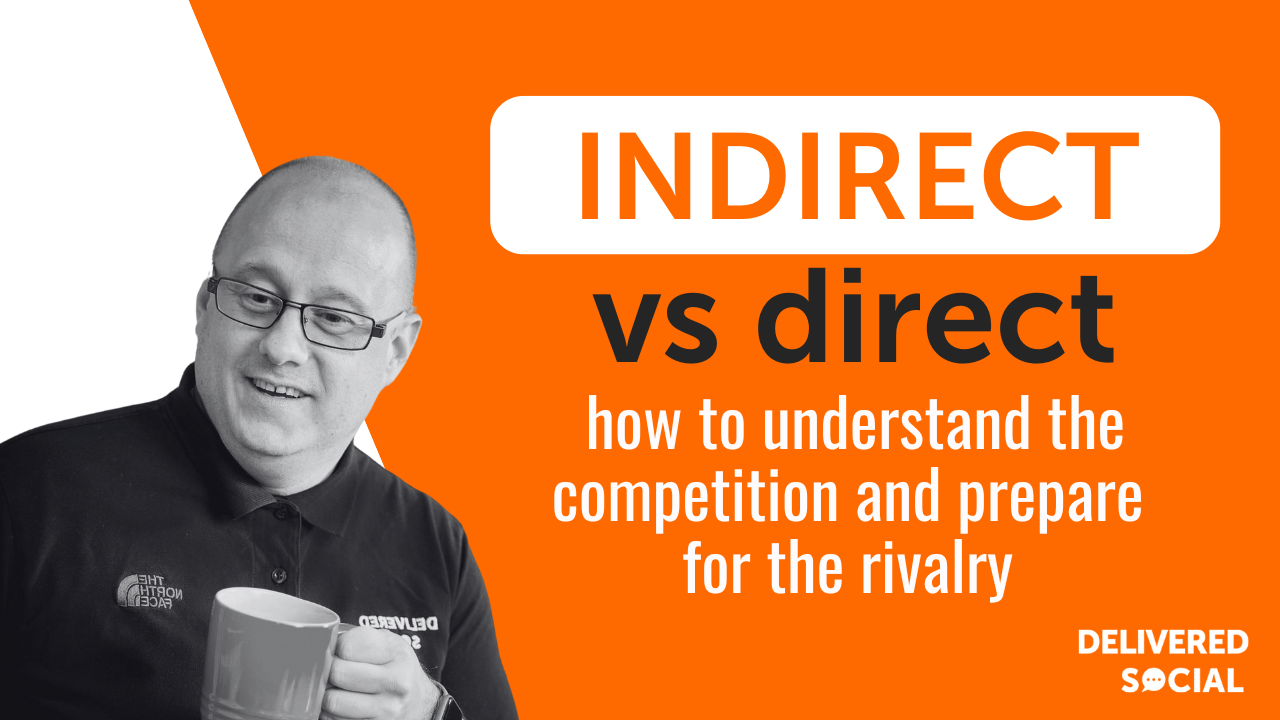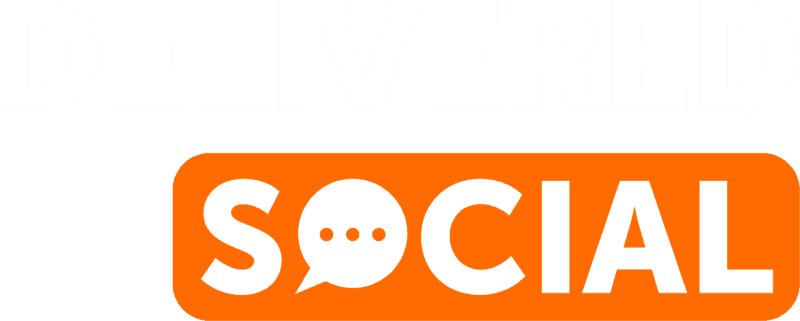
Have you ever found yourself trying to decide which of your competitors to focus on? It can be tough to know whether to go after the direct competition or the indirect competition. But don’t worry, we’re here to help with our super simple guide. The business scene has always been a tricky one, you think you have your eureka moment when the customers start to increase in numbers and all of a sudden they start to look somewhere else, at your competitors, which is totally not your fault. The consumer behaviour trend is a very dynamic one and you have to always reinvent your product and service to keep up!
The Definition Of Direct vs Indirect Competitors Explained
First, let’s define the two types of competitors:
Direct competitors are businesses that offer the same product or service as you. These are the competitors that you’re most likely thinking of when you think of “competition.”
Direct competitors are important to keep an eye on because they’re the businesses that are most likely to be stealing customers from you (or have the target market you are looking to steal). They’re your biggest threat in the market, so it’s important to find ways to differentiate yourself from them. This could mean offering a higher quality product, better customer service, or a more innovative approach to solving the same problem.
It’s also important to understand the strengths and weaknesses of your direct competitors. This will help you determine where you have an advantage and where you need to improve. You can gather this information through market research, customer feedback, and by keeping an eye on their marketing and sales efforts.
Indirect competitors are businesses that offer a similar product or service but in a different way. They might have a slightly different target audience or approach to solving the same problem.
For example, let’s say you own a coffee shop that primarily serves espresso-based drinks. Your direct local competitors might be other coffee shops in your area that also serve espresso drinks. However, your indirect competitors might also serve smoothies, have a bakery that serves danishes or have a cafe that serves hot breakfasts. In short, their offering might be different to yours but with some crossover – making it appealing to customers.
Indirect competitors can still pose a threat to your business because they might be able to attract customers who are looking for a similar product or service. For example, a customer who is looking for a coffee-based drink might choose a smoothie from the smoothie shop instead of an espresso from your coffee shop.
It’s important to keep an eye on your indirect competitors, especially if you’re just starting out or trying to break into a new market. These competitors are usually smaller and less established, so it might be easier to acquire some of their market share. By understanding your indirect competition and finding ways to differentiate yourself, you can better position your business for success.

Which type of competitor should I focus on, direct or indirect?
So, which type of competitor should you focus on? The answer depends on your specific business goals and circumstances. Do you aim to grow your business by being consumer-centric? Do you want to stick to your values and beliefs? For example, because you are a vegetarian, you sell vegetarian food, then you open a store in a meat market! That will be a bad idea right?! Here are a few things to consider:
Stage of business
If you’re starting out and trying to get a foothold in the market, it might make sense to focus on the indirect competition. These competitors are usually smaller and less established, so it might be easier to steal some of their market share. Plus, going after the indirect competition can also help you differentiate yourself from the direct competition and stand out in the market – you might even find some areas to add to your business that you’ve never considered.
Market dynamics
It’s also important to consider the overall market dynamics. If the market is crowded with a lot of competition, it might be more beneficial to focus on indirect competition. This can help you stand out and find new customers who might not be served by the direct competition currently.
Customer needs and preferences
Customers vote with their feet and it’s important to consider your customers and their needs and preferences. If you can offer a unique product or service that meets a specific need or desire that the competition isn’t meeting, it might make more sense to focus on indirect competition. This will help you differentiate yourself and appeal to a different set of customers.
Resources and capabilities
It’s also important to consider your own resources and capabilities when deciding which type of competitor to focus on. If you have limited resources, it might make more sense to focus on indirect competition. This will allow you to focus your efforts on a smaller group of competitors and potentially achieve a better return on investment. You can take on the big players in your market in a few years.
Price points matter now more than ever
How do you set the perfect price point for your business? It’s a question that can make or break your success. Your price points can not only attract customers and push out competitors, but they can also help you determine what kind of competitors you have.
How does it work when you are looking at direct vs indirect competitors? Generally, direct competitors have very similar price points as you. That’s because they often target the same market segment as you. For example, if you think about McDonald’s and Burger King, you probably don’t think of them as fine dining options. They’re both fast food chains that offer similar products at similar price points.
On the other hand, indirect competitors may offer the same products or services as you, but with very different price points. A good example of indirect competitors based on price points are Gucci and H&M. Both of these brands sell clothes, but the price points are only comparable at best. Gucci is known for its luxury fashion, while H&M is more of a budget-friendly option.
So, how do you decide on the right price points for your business? It’s important to consider your target market, the value you offer, and your costs. You want to set a price that is fair to your customers and allows you to make a profit, while also being competitive in the market.
By understanding the price points of your competitors and finding ways to differentiate yourself, you can set the perfect price point for your business and gain an edge in the market.
Customer acquisition and market share – must read!
When it comes to evaluating your competitors (both direct and indirect), there are two main things you want to consider: how they acquire their customers and how much market share they have. Here’s how to gather this information:
Customer acquisition
Spend some time on your competitors’ social media channels and websites to see how they’re acquiring customers. Do they exhibit at trade shows? Do they advertise on billboards or use pay-per-click ads? This will give you ideas for your own customer acquisition strategy and help you see what’s working for your competitors. If it’s working for them, and it’s possible for you then the answer is clear – have a go.
Market share
To get a sense of your competitor’s market share, start by looking at their customer lists (many businesses post their customers on their websites). If you’re in a B2C business, see if your competitors’ websites have any customer numbers listed. Then, use this information to estimate your competitors’ market share and compare it to your own. This will help you understand how much growth potential there is for you and where you stand in relation to your competition.
Top tip if you are a bricks-and-mortar business. Wanna see how busy your competitors are? Grab a coffee and sit outside their shop for an hour a day for a week and monitor how many people walk in and subsequently walk out with a purchase – a great way to see their current conversion rates.
By gathering this information, you can get a better sense of your competition and how to position your business for success.
How can I keep an eye on my direct vs indirect competitors?
If you want to stay ahead of the game in your industry, it’s important to keep an eye on your competitors. Here are some tools and tactics we recommend for staying on top of your competition:
Google Alerts
Set up google alerts for your competitors’ names (both direct and indirect competitors) to stay updated on their online activities. This will give you insights on their next moves and how you can effectively tailor your marketing strategies to tackle them. This will enable you to stay ahead of your niche.
Social Mention
Search for your competitors and their content on this site to see how they’re performing on social media. This will enable you find out what their customers are most engaged with and then you can use this knowledge to curate your subsequent social media content. It will like gain engagement from the same target market.
UberSuggest
Use this service to compare your SEO rankings to those of your competitors and see where you stand in the search engine results. Investing time in your SEO is key to future business development. SEO gives you the ultimate edge over your competitors because your business will rank higher on search engines. Always try to get on the first page of google, because who checks the second?!
By using these tools and regularly reviewing and monitoring your competition, you can learn a lot about your industry, your customers, and changes in the ever dynamic market and lead to your business gaining a lot more market share. Just remember to use this information as a source of inspiration, not imitation. You want to stay true to your own brand and offer something unique to your customers – they’ll love you even more for it.
Interested In Working Together?
Introducing Delivered Social. We’re The Most-Rated Digital Agency In Surrey & Hampshire – We’ve Got To Be Doing Something Right.
Delivered Social is a digital marketing agency with one mission—to help businesses grow. We’re famous in Guildford and Portsmouth for our social clinics. We believe in free advice. We build lasting relationships because our team prides itself on being helpful, which our clients appreciate.
If you are looking for a new website or an agency to manage your social media presence, we can help.
If you need something slightly different, here's a super handy list of all our services, or you can always email us.


















